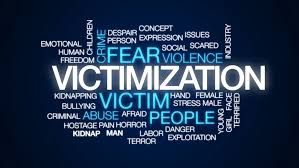In this article, we discussed the meaning of crime and victimization, the types, examples, effect, we also talked about the stages and factors
Definition
Crime victimization is the act of causing harm to a person or their property through criminal actions. It can have severe and long-lasting consequences for the victim, including:
Emotional and psychological harm: Violent crimes like assault, rape, and kidnapping can cause lasting trauma.
Financial loss: A stolen vehicle can lead to job loss and financial insecurity.
Impact on role functioning: Crime victimization can make it difficult to perform in various roles, such as parenting, intimate relationships, and work.
Victimization refers to the outcome of an intentional action taken by a person to cause harm or destroy the property of another person. A victim is a person who is harmed, injured, or killed as a result of a crime.
There are several types of victimization, including:
Physical: Physical harm, such as assault and battery
Mental: Emotional harm
Sexual: Sexual assault or rape
Theft: Stealing or burglary
Domestic violence: A type of victimization
Murder: A type of victimization
Childhood abuse: Can include physical, emotional, sexual, or neglectful abuse
Victimization can also be categorized by the level of involvement:
Primary: The direct victim of the crime
Indirect: People close to the primary victim
Secondary: Witnesses to the crime
Crime victimization is when a person is harmed, injured, or killed as a result of a crime. Some examples of crime victimization include:
Personal victimization
Offenses that cause psychological, physical, or financial harm to a person, such as:
Physical assault
Sexual assault
Child abuse
Bullying
Rape
Domestic violence
Property victimization
Offenses that are committed against a person’s property or possessions, such as:
Theft
Stalking
Trespassing
Other examples
A serial killer victimizing their victims, a swindler victimizing their victims, or an abusive parent victimizing their child
There are multiple levels of victimization, including:
Direct: The person who is the victim of the attack
Indirect: People close to the primary victim
Secondary: Witnesses to the crime, who may experience their own trauma.
Crime victimization can be caused by a number of factors, including lifestyle choices, demographics, economic status, social activities, and substance abuse:
Lifestyle: Lifestyle choices can increase the risk of victimization, such as walking alone at night in a dangerous area, living in a “bad” part of town, or associating with known criminals.
Routine activities: Routine activities theory is one of the main theories of it.
Demographics: Demographics can contribute to it.
Economic status: Economic status can contribute to it.
Social activities: Social activities can contribute to victimization risk.
Substance abuse: Substance abuse can contribute to it .
Crime victimization can have many effects on a victim, including:
Physical
Victims may experience physical injuries, such as bruises, cuts, broken bones, or gunshot wounds. They may also experience physical side effects like increased heart rate, hyperventilation, numbness, shock, and headaches.
Emotional
Crime Victims may experience a range of emotions, including disbelief, anger, fear, terror, frustration, confusion, guilt, shame, and humiliation. They may also feel a sense of powerlessness, which can lead to isolation and lower self-esteem.
Psychological
Crime Victims may experience psychological distress that can range from short-term to long-term. In severe cases, this distress can lead to serious mental health conditions like posttraumatic stress disorder (PTSD) or depression.
Behavioral
cream Victims may experience behavioral changes, such as becoming more aggressive, hyperactive, or withdrawn. They may also have trouble sleeping or concentrating, or may avoid activities they once enjoyed.
Social
Crime Victims may experience difficulties in their ability to perform roles related to parenting, intimate relationships, and occupational and social functioning.
The effects of it can vary depending on the type of victimization, the amount of loss, and the trauma suffered.
Conclusion
Crime victimization is when someone is harmed, injured, or killed as a result of a crime. The victim can suffer physical, psychological, and financial harm. It is the involuntary, personal exposure to criminal acts. it can be it economic, physical, psychological and/or emotional.


